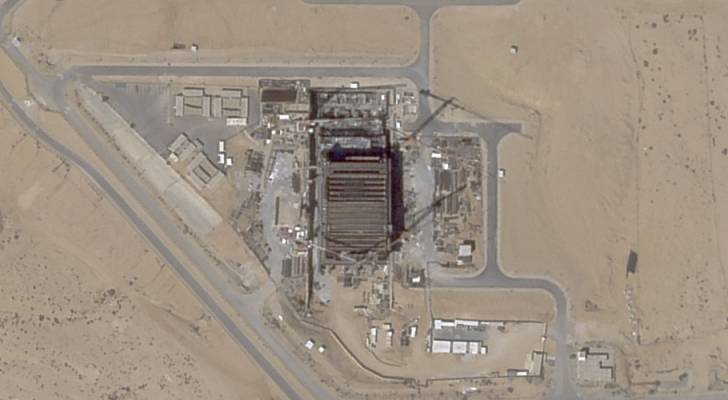Satellite photo of the Shimon Peres Negev Nuclear Research Center near the city of Dimona (Credit: Planet Labs PBC via AP)
Satellite images reveal expanded construction at 'Israel’s' Dimona nuclear site
New satellite images indicate significant construction activity at 'Israel’s' Dimona facility, long suspected of playing a central role in the country’s nuclear program, the Associated Press (AP) reported.
Seven independent experts analyzing the imagery agreed that the work is likely linked to 'Israel’s' atomic weapons capability, though they differed on its exact purpose.
Three experts suggested the size, location, and multi-story layout point to the construction of a new heavy water reactor, a facility capable of producing plutonium, a key component for nuclear weapons. Four others proposed that the work could instead support a nuclear weapons assembly facility.
Jeffrey Lewis, of the James Martin Center for Nonproliferation Studies, told reporters, “It’s probably a reactor, that judgment is circumstantial, but that’s the nature of these things. It’s very hard to imagine it is anything else.”
'Israel’s' government maintains a strict policy of ambiguity on nuclear matters and did not respond to requests for comment. The White House also declined to comment.
Excavations at the site, approximately 90km south of Jerusalem, were first reported in 2021. Early satellite images showed workers digging a large trench near Dimona’s existing heavy water reactor. Recent images from July 5 show concrete retaining walls and evidence of multiple underground floors, with cranes present at the site.
“There’s no containment dome visible yet,” said Edwin Lyman of the Union of Concerned Scientists, “but it could be built later, or the reactor could be designed without one.”
Dimona’s original reactor, operational since the 1960s, has far outlasted most reactors of its era, suggesting the need for replacement or retrofitting.
Daryl Kimball, executive director of the Arms Control Association, explained the stakes, “If it’s a heavy water reactor, they’re seeking to maintain the capability to produce spent fuel that they then can process to separate plutonium for more nuclear weapons. Or they are building a facility to maintain their arsenal or build additional warheads.”
'Israel', like India and Pakistan, is thought to rely on heavy water reactors to produce plutonium and tritium, another material used to enhance warhead yield. Estimates suggest 'Israel' possesses roughly 90 nuclear warheads, though the exact number is unknown due to the country’s secrecy.
“If they’re building a new production reactor,” Lyman said, “it doesn’t necessarily mean they’re looking to expand the plutonium they have, but to manufacture tritium,” which decays about 5 percent annually.
'Israel’s' nuclear policy of ambiguity, developed in the late 1950s amid regional conflicts, has been credited with deterring enemies while avoiding direct disclosure of its capabilities. 'Israel' has never joined the Nuclear Nonproliferation Treaty (NNT), and the International Atomic Energy Agency (IAEA) has no inspection rights at Dimona, except at its smaller Soreq research reactor.
Asked about the construction, the IAEA reiterated that Israel “is not obligated to provide information about other nuclear facilities in the country.”




